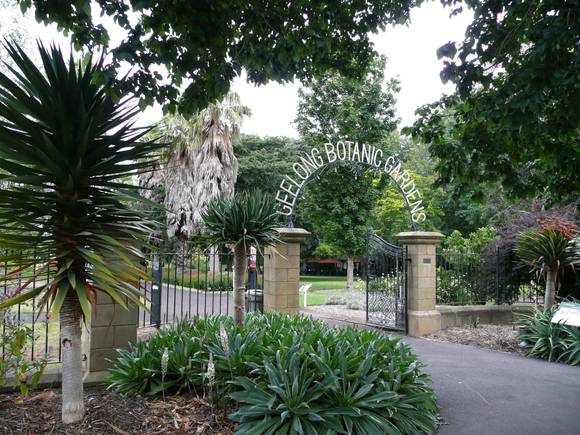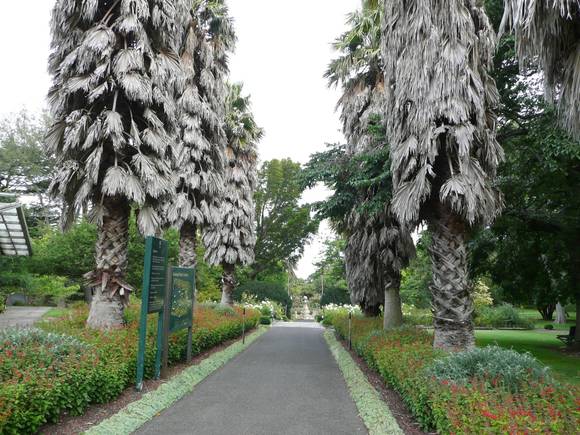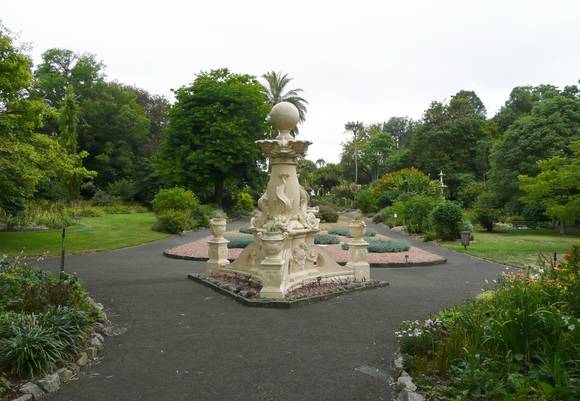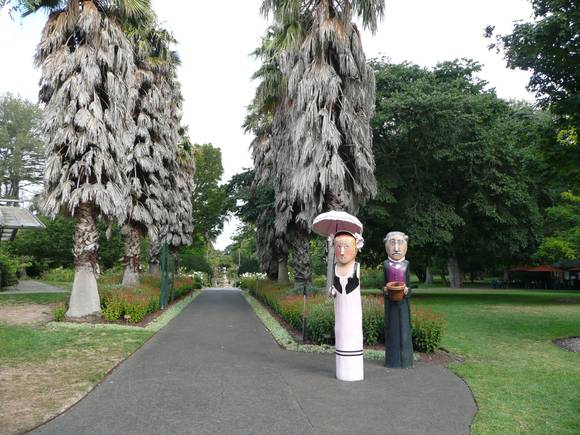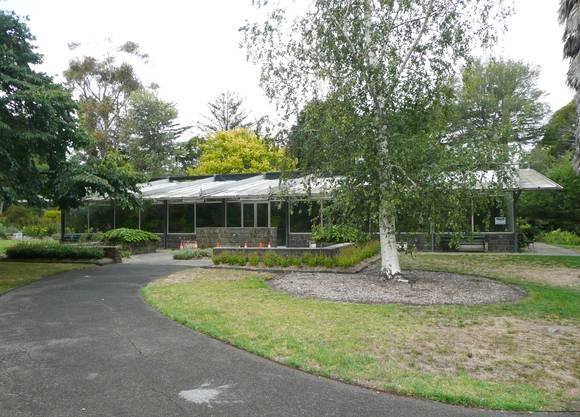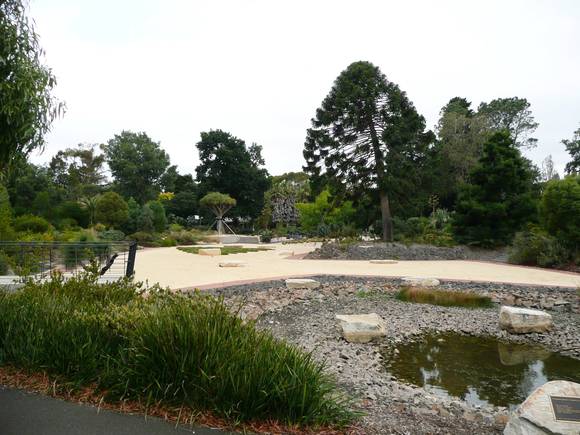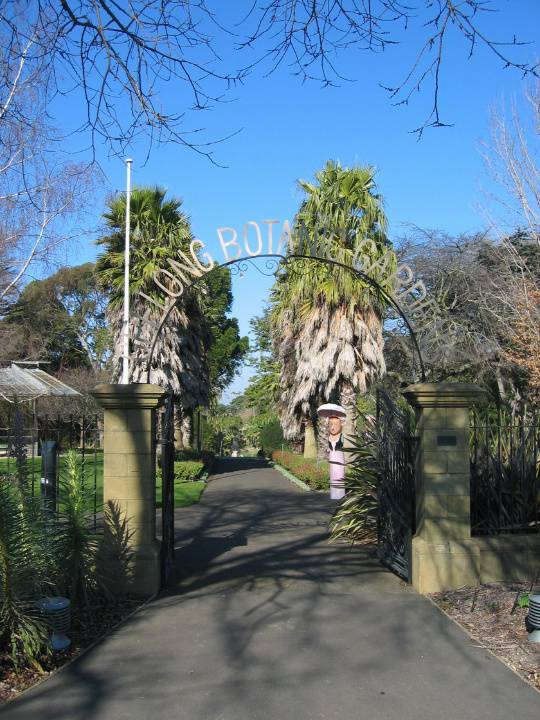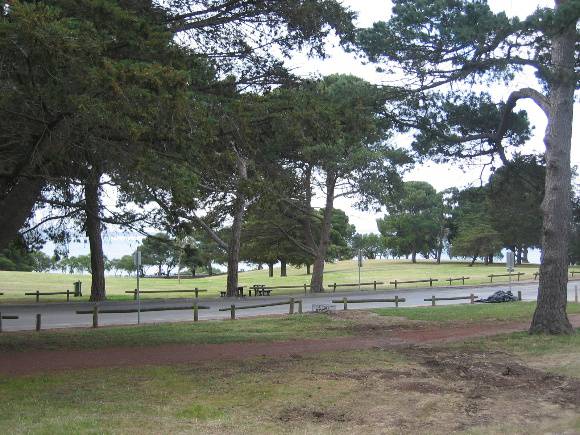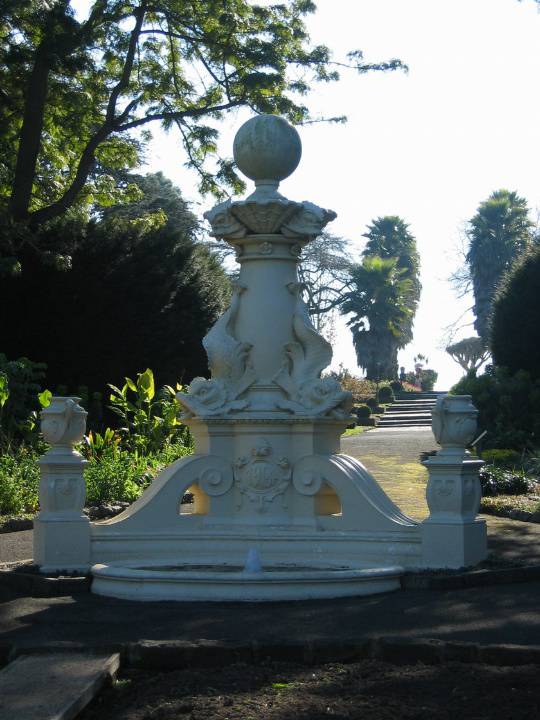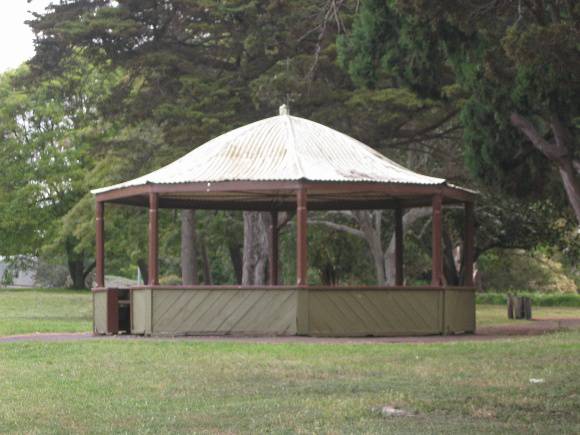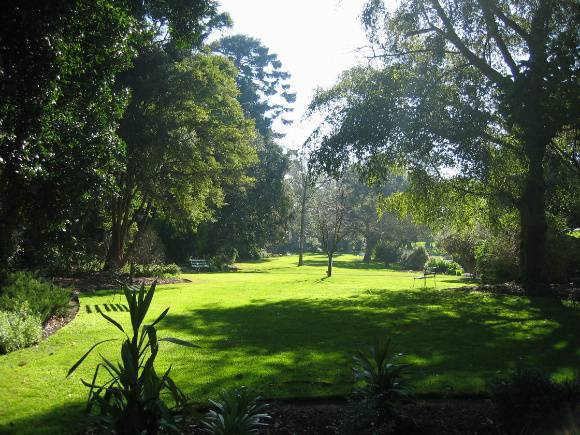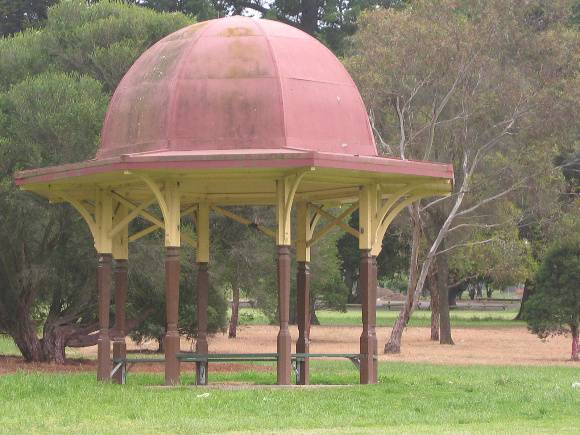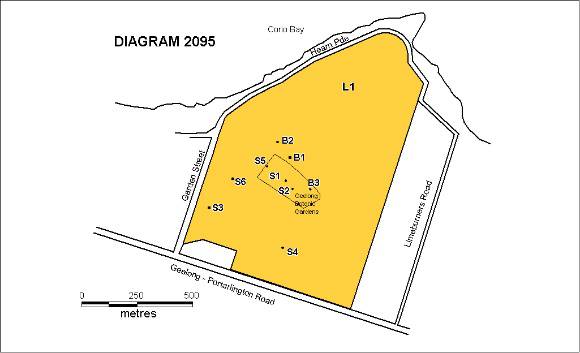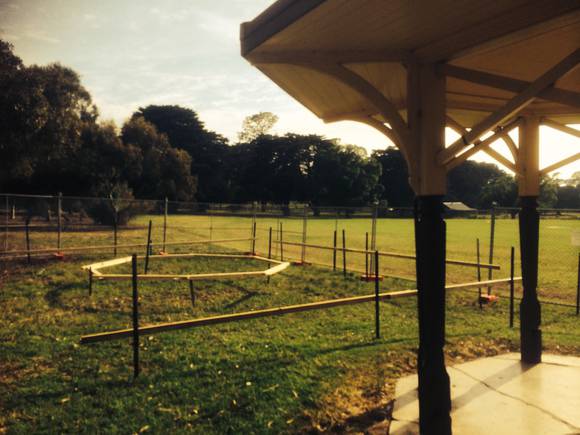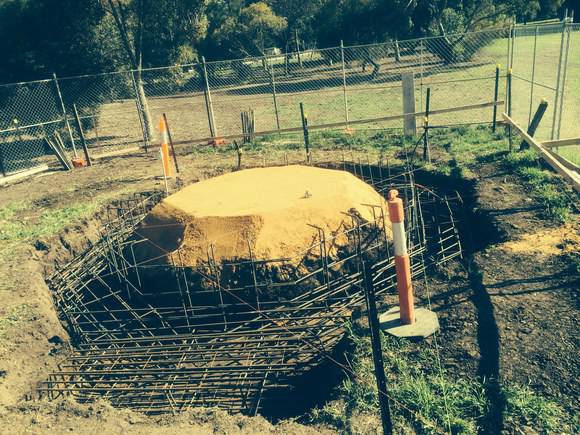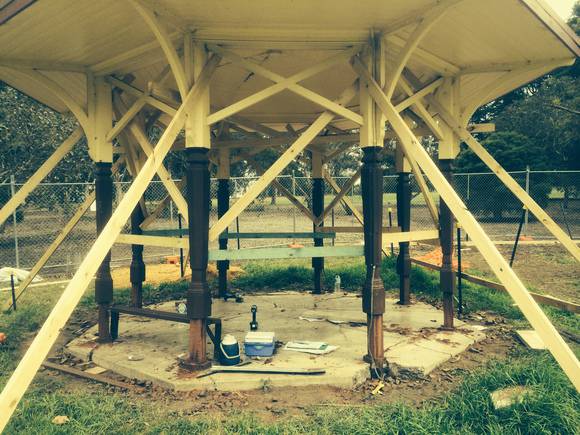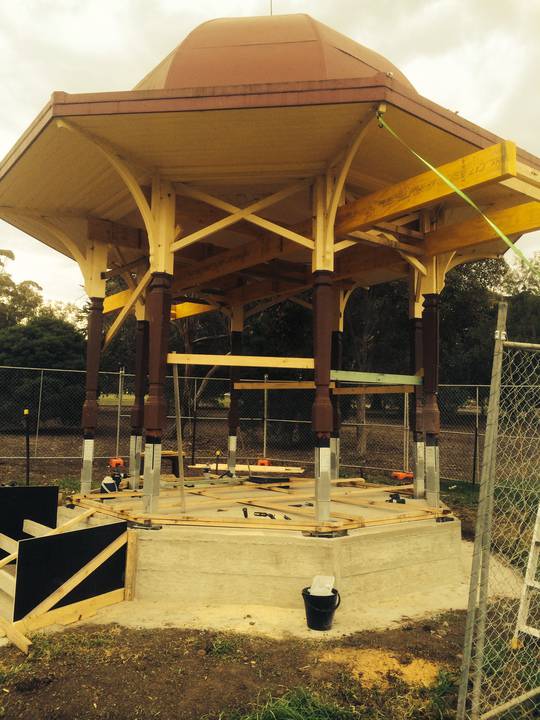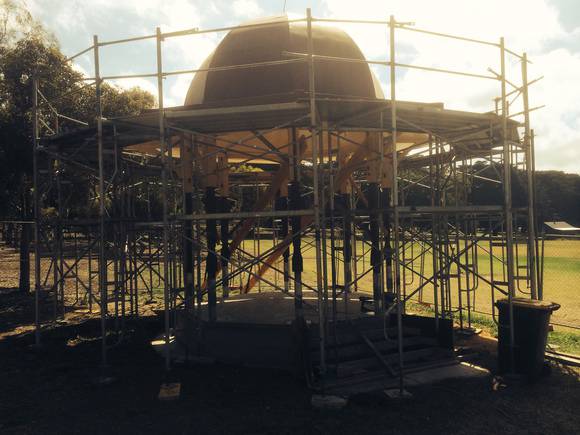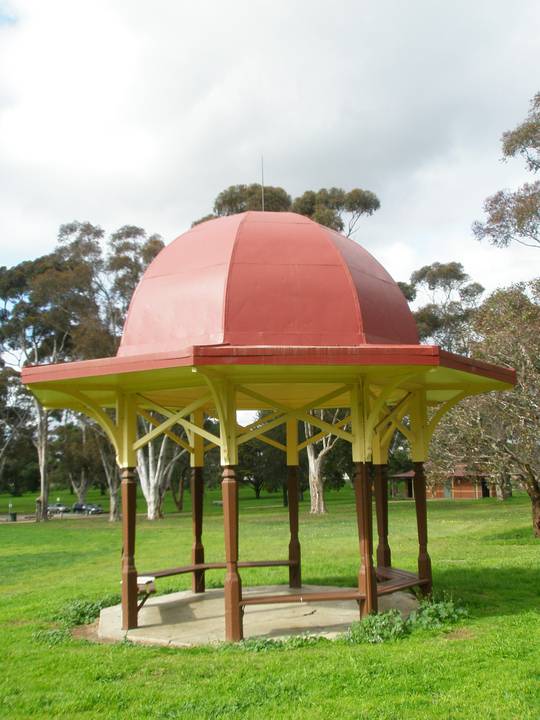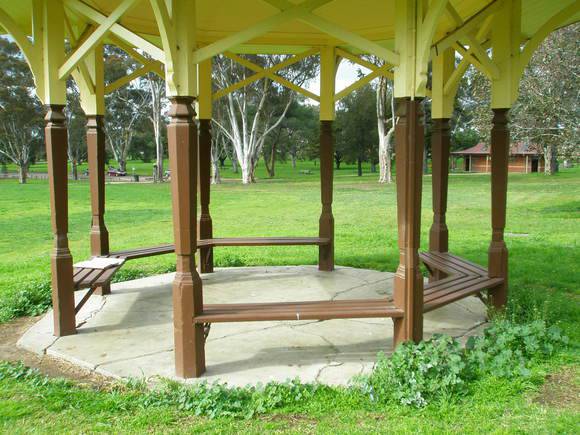| Back to search results » | Back to search page » |
|
EASTERN PARK & GEELONG BOTANIC GARDENS
Statement of Significance
What is significant? Eastern Park at Limeburners Point Geelong is approximately 90 hectares of public parkland used for recreational, botanical and horticultural activities and includes the Geelong Botanic Gardens, the Geelong Bowling and Croquet Clubs and several playing fields. The Park abuts Limeburners Point Kilns (H1288) to the north and east and Eastern Beach Reserve (H0929) to the west. The park landscape is characterised by open grasslands and mature trees dominated by conifers and Sugar Gums and views across Corio Bay. The Crown Reserve land of Eastern Park was set aside as a Botanical Reserve in 1851. Daniel Bunce, first curator of the Gardens (1857-1872), planned botanic gardens for the entirety of the reserve. He created an intricate pattern of pathways and a lake towards the southeast corner (filled in 1929), initiated the planting of conifers as the dominant species in the park and formally laid out the parallel paths and beds of the nursery in the centre of the reserve. Whilst curator Bunce used the Botanic Gardens to propagate and distribute exotic and indigenous plants to other botanic reserves then being established in Victoria including White Hills in Bendigo (H1915) and Williamstown (H1803). Bunce was also responsible for the early designs of the Colac and Camperdown Botanic Gardens. The Gardens second curator, John Raddenberry (1872 -1896) simplified Bunce's original design for pathways and concentrated the botanic gardens in Bunce's nursery area at their present location. The planting of conifers in the Park was continued by Raddenberry and his successors. The area now known as Geelong Botanic Gardens is 3.6 hectares of intensely cultivated gardens laid out along an east-west axis in a shallow valley in the centre of Eastern Park. At the core of the Gardens are the parallel paths and beds established by Bunce in the 1860s for the systematic and scientific planting of the original botanic nursery. This design was subsequently utilised by Raddenberry who constructed a large greenhouse with fountain and ponds over the central garden bed along the axis of the original nursery in 1885 (removed in 1957). The Botanic Gardens is dominated by mature 19th century tree plantings, including rare exotic species, alongside more recent plantings. There have been a number of changes to the extent of the Botanic Gardens although the 19th century core has remained intact. The western boundary of the Gardens was extended in 1959 for the creation of the rose garden, conservatory and decorative gates (designed by Evald Borge Hansen) were added to the new western entrance in 1964. Further extensions of the southern boundary were made in 1990, incorporating open grassland and trees of Eastern Park. In 2001 a 21st Century Garden was created on the western boundary, further extending the area of the Gardens. Within the Botanic Gardens are a number of purpose built structures including a 19th century sunken Pit glasshouse designed to retain a consistent temperature through subsurface construction of its lower portions, the A L Walter Conservatory (1964) and the Florence E Clarke Geranium Conservatory (1972). Several landscape features and structures have been moved to the Gardens from elsewhere including the First Customs House (H0185), erected in Geelong in 1838 and moved to the Botanic Gardens in 1889; the former Cabmen's Shelter, erected in Geelong in 1905 and moved to the Gardens in 1988; the Hitchcock Fountain (1904) and Urns (1904) and the Traill Fountain, all moved from Market Square to the gardens in 1912; and four Japanese bronze cranes erected at St Albans, Whittington (H0741) in the 1870s and brought to the Gardens from Eastern Beach in 1968. The original extent of Eastern Park has undergone a number of changes, notably the excising of 1.6 hectares in the southwest corner for the Geelong High School in 1914. The pathways and drives have been partially lost and are today marked by rows and avenues of trees or modified to accommodate vehicular traffic and the creation of the 21st Century Garden, however the major elements of the 19th century pathway design remain including the circular parking area in the northwest of the Park providing views across Corio Bay. Eastern Park contains a number of structures and landscape features built for the Park and brought from elsewhere. These include the Superintendent's residence (1942), adjacent to the remains of the original curator's cottage (1854); a rotunda, erected in its present location by 1916 but possibly dating to the turn of the century; the former Ladies Kiosk, erected in Market Square in 1904 and relocated to Eastern Park in 1929; a bronze memorial statue of Queen Victoria, erected in Market Square in 1904 and relocated to Eastern Park in 1912; and the concrete pedestal of a now lost sculpture of the Laocoon, presented to the gardens in 1864. How is it significant? Eastern Park and Geelong Botanic Gardens are of historical, scientific (botanical) and aesthetic significance to the State of Victoria, as well as significant for their rarity and uniqueness, potential to educate or illustrate and ability to exhibit the principal characteristics or representative nature. Why is it significant? Eastern Park and the Geelong Botanic Gardens, is of historical significance as the second earliest botanical reserve, created only five years after Melbourne's Royal Botanic Gardens (H1459). Eastern Park and the Geelong Botanic Gardens are also historically significant for their association with noted horticulturalist Daniel Bunce, the Garden's first curator from 1857-1872 who was a pioneer in Australian plant identification and propagation. Geelong Botanic Gardens is historically significant as an intact example of a 19th century scientific approach to systematic planting for a botanical garden; for the early design and the layout of parallel paths and beds, in place by the 1860s under the curatorship of Daniel Bunce; for the planting character and informal layout of the surrounding sections and the remnant water features that reflect the later more picturesque approach developed by curator John Raddenberry (1872 -1896). Eastern Park and the Geelong Botanic Gardens are of historical significance for the Queen Victoria Avenue of Ulmus minor 'Variegata' (Variegated Elm) planted in 1897,which is the earliest known planting of this cultivar in Victoria and commemorates the Silver Jubilee of Queen Victoria. Eastern Park is of scientific (botanical ) significance a representative example of a mid-Victorian public park, with surviving carriage drives lined with conifers and tree plantings relating to its first decades of development; these include some rare and outstanding individual specimens such as Pinus torreyana (Soledad Pine), Pinus halepensis (Aleppo Pine), Pinus quadrifolia (Mexican Stone Pine), Eucalyptus bauerana (Blue Box), Acer monspessulanum (Montpellier Maple), Cupressus goveniana (Gowen Cypress), Cupressus macnabiana (Macnab Cypress), Juniperus excelsa (Grecian Juniper), Araucaria columnaris (Cook's Pine), Cupressus torulosa (Bhutan Cypress), Harpephyllum caffrum (Kaffir Plum), Picconia excelsa, Xanthorrhoae sp. (Grass-tree). Geelong Botanic Gardens is of scientific (botanical) significance as an early outstanding example of a regional botanic garden, one of a network created in colonial Victoria that are characterised by a wide range of plants; a picturesque landscaped design incorporating water features and decorative structures; a contrast between open lawns and densely planted shrub beds and areas of intensive horticultural interest. Geelong Botanic Gardens is also of scientific (botanical) significance for its collection of plants characteristic of late 19th century gardens and representative of more specialised plants groups befitting the scientific role of a botanic garden, and for some outstanding individual specimens. These include Scolopia brownii (Gunstock Wood), Ginkgo biloba (Maidenhair Tree), Prumnopitys andina (Plum Fir), Sequoiadendron giganteum (Sierra Redwood), Wigandia caracasana, Quillaja saponaria (Soap-bark Tree), Fagus sylvatica f. purpurea (Purple Beech), Jubaea chilensis (Chilean Wine Palm), Actinostrobus pyramidalis (Swan River Cypress-pine), Picconia excelsa, Corymbia maculata (Spotted Gum), Agathis robusta (Queensland Kauri), Podocarpus elatus (Plum Pine), Acer pseudoplatanus 'Leopoldii' (Variegated Sycamore), Araucaria bidwillii (Bunya Bunya Pine) row of 12 trees, Ficus platypoda var. angustifolia, Brachychiton discolor (Queensland Lacebark), Alnus acuminate subsp. glabrata (Evergreen Alder), Cassine crocea (African Holly), Brachychiton x roseus subsp. roseus (Hybrid Flame Tree), Juniperus thurifera (Incense Juniper), Juglans nigra (Black Walnut), and Corynocarpus laevigatus (Karaka). Eastern Park is aesthetically significant in forming a picturesque landscape of open grasslands and mature trees, individual and in avenues of contrasting forms, foliage and colours, and views across Corio Bay. Geelong Botanic Gardens is of aesthetic significance for its highly ornamental character derived from the mature plantings, the vistas within the gardens, the physical and visual protection afforded the Gardens by their being at the centre of Eastern Park, and the collection of features such as the former Gate Lodge, Superintendent's residence, Cabman's Shelter, kiosks, fountains, urns, statues, and timber and iron seats that contribute to the ornamental design of the garden landscape.
Group
Landscape - Cultural
Category
Cultural Feature


